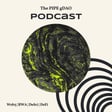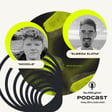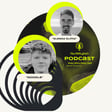
Patron exponentialism: The theatre of scarcity and the future of cultural protocols
In this episode of The PIPE gDAO Podcast, host Noodle explores the world of Patron Exponentialism — a revolutionary concept turning status into a protocol. What happens when scarcity, envy, and prestige become programmable?
From the Renaissance-era roots of patronage to the high-speed token economies of Web3, this episode unpacks how the Patron Generator uses scarcity and network effects to create exponential cultural growth. Noodle breaks down how behavioral economics, social signaling, and exponential network laws — like Metcalfe’s and Reed’s — converge to build a new cultural identity layer for the decentralized world.
Discover why Patron Portraits, minted just twice a day, are more than digital art — they’re proof-of-patronage, symbols of belief, and engines of prestige. Learn how the GDAO token powers the scarcity flywheel, how envy drives adoption, and how “status as infrastructure” might redefine Web3 identity.
If you’ve ever wondered how social capital becomes a tradable asset, or what happens when cultural scarcity meets protocol design, this episode is your deep dive into the psychology, tokenomics, and theatre behind decentralized prestige.


